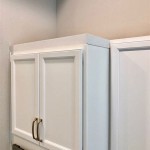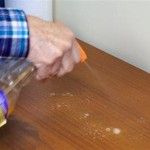Essential Aspects of Kitchen Cabinet Stain
Kitchen cabinets play a pivotal role in defining the overall aesthetics and functionality of a home's culinary space. Selecting the appropriate stain can significantly enhance their appearance and durability. Here are some essential aspects to consider when choosing a kitchen cabinet stain:
Wood Species
The type of wood used for your kitchen cabinets will influence your stain choices. Different wood species absorb stain in various ways, resulting in distinct finishes. For instance, oak is known for its open grain, producing a rustic effect when stained, while maple's tight grain yields a smoother, more refined finish.
Stain Color
The color of the stain is crucial in creating the desired ambiance in your kitchen. Light stains, such as white or beige, impart a bright and airy feel, while dark stains like ebony or mahogany evoke a sense of warmth and sophistication. Consider the overall color scheme of your kitchen and choose a stain that complements it.
Stain Type
There are two main types of kitchen cabinet stains: oil-based and water-based. Oil-based stains penetrate deeply into the wood, providing a durable and moisture-resistant finish. Water-based stains, on the other hand, are more environmentally friendly and dry quickly, making them suitable for DIY projects.
Finish
The finish of the stain can alter its appearance and functionality. Glossy finishes reflect light, creating a brighter and more formal ambiance, while matte finishes absorb light, giving cabinets a more muted, sophisticated look. Satin finishes offer a compromise between the two, providing both sheen and durability.
Durability
Consider the durability of the stain when making your selection. Kitchen cabinets endure daily use and exposure to wear and tear. Choose a stain that can withstand cleaning and resist scratches and dents. Oil-based stains tend to offer better durability than water-based stains.
Environmental Considerations
For those concerned about environmental impact, water-based stains are a more eco-friendly option compared to oil-based stains. They contain lower levels of volatile organic compounds (VOCs), which can contribute to indoor air pollution.
Professional or DIY
Depending on your skill level and experience, you can choose to stain your kitchen cabinets yourself or hire a professional. Professionals possess specialized knowledge and equipment, ensuring a high-quality finish. However, DIY staining can save you money and provide a sense of accomplishment.

Staining Kitchen Cabinets Pictures Ideas Tips From

The New Cabinet Stain Colour For Kitchens Trends Wood

Staining Your Wood Cabinets Darker Young House Love

How To Stain Wood Cabinets True Value

How To Make Rustic Kitchen Cabinets By Refinishing Them The Best Stain Color Amanda Katherine

Painted Vs Stained Cabinets Jm Kitchen And Bath Design

How To Stain Oak Cabinetry Tutorial The Kim Six Fix

15 Stained Wood Kitchen Cabinets To Warm The Heart Of Your Home

15 Stunning Kitchens With Stained Cabinets Sincerely Marie Designs Kitchen Rustic Renovation

3 Kitchen Cabinet Stain Colors Popular In Montgomery County Pa Dailey Manufacturing Co
Related Posts








